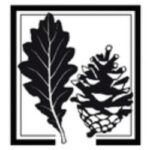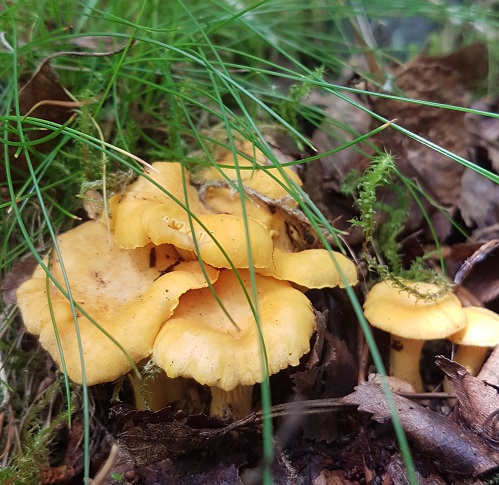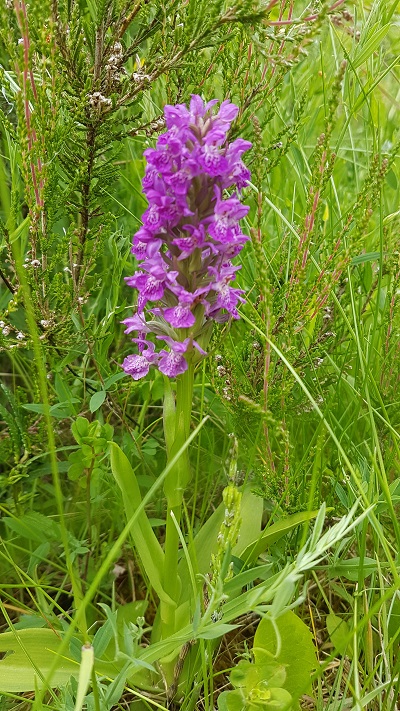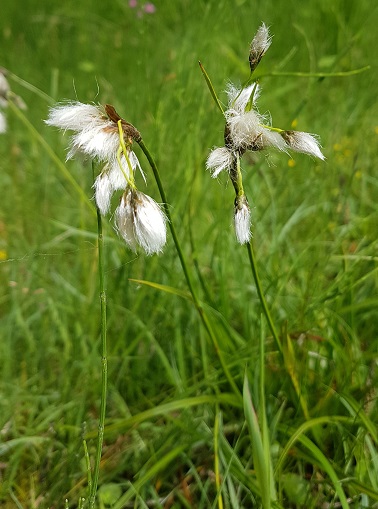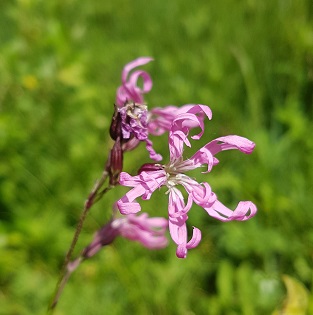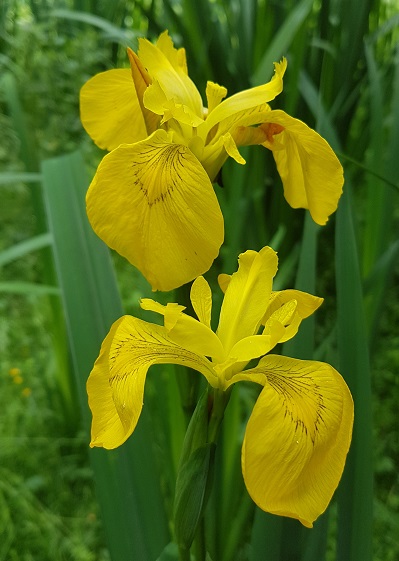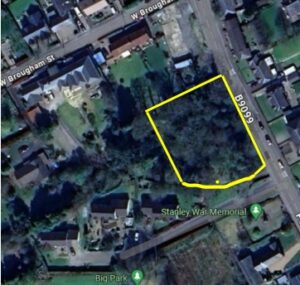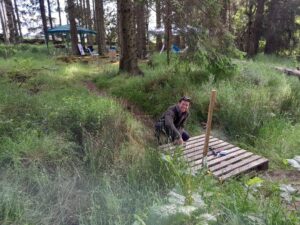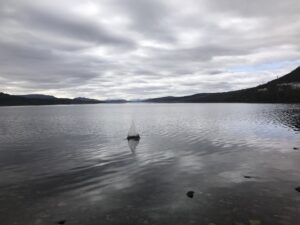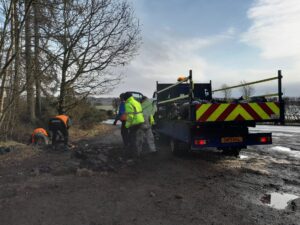I can never get enough of the elusive levels of King’s Myre in Taymount Wood, and the half-land, half-water fringes of the lochan, oozing with damp warmth, damselflies and unexpected flowers. Ferns lit the tangled route in to near the water’s edge, green, lush and varied. Shiny, sprawling ladder ferns, the fractal fronds of taller, shuttlecock-shaped male ferns rising above.
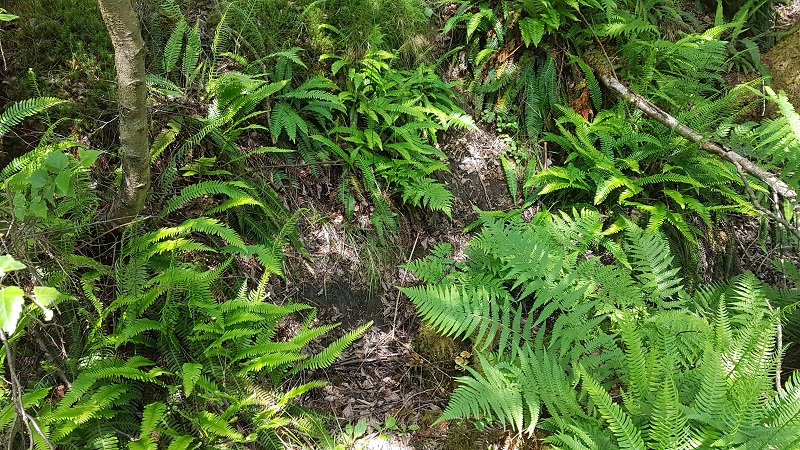
When the water was obvious in my shoes, Yellow Flag Iris shone exquisite, and orchids appeared, sunning themselves in their pink frocks. Ragged Robin blew in competition against a haze of mare’s tail, but the Bogbean was not yet out. What I first took to be seed-heads of something turned out to be the emerging flowers of a single plant of Bog Cotton, or Cottongrass – a species well suited to myre, but which I’d not seen here before.
Sated with flowers, I drifted back to the path, casting hopeful glances into the mossy ditches and banks beside the track. It was June, early for the summer edible mushrooms, but not too early to look. I was duly rewarded – an enormous but overblown Orange Birch Bolete lording it over an eruption of apricot-hued chanterelles.
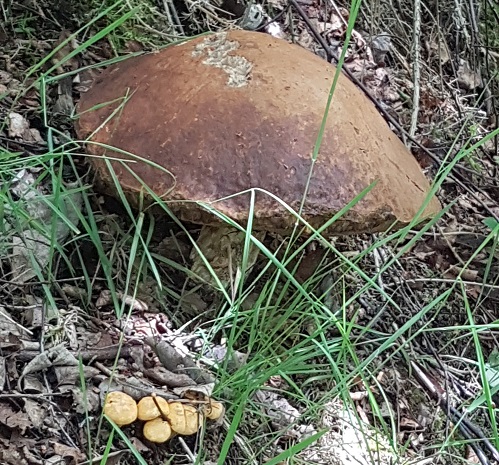
And there we have it – the gift AND the challenge for June and the coming months. Wild food has become fashionable in the last couple of decades, and where the easily recognisable chanterelle is found, you will get the pickers. Some are picking for themselves and don’t know when to stop – I can understand this, for it is hard, faced with such beautiful bounty, to resist the call of “just a couple more”. Some are picking for commercial companies, restaurants or hotels and will be paid by the quantity picked. Commercial pickers are not necessarily irresponsible, but we’ve all seen boxes and bag-loads of chanterelles being ferried out of the wood, so full, that many are spilled all along the path and left to rot. Some will tell you it does no harm, because the mushroom is only the reproductive organ of the fungus, the vast majority of it being underground. True enough. Centuries of mushroom harvesting in the woods of central Europe do not appear to have wiped out the fungi. Some people even claim it encourages more to come. That one’s not true. It’s not like picking flowers. Mushrooms are weather-dependent; they only form and spread spores when the conditions of temperature and humidity are right, and if someone comes along and removes every one, the right conditions might just not come again that year. The fungus has lost a chance to reproduce, it is weakened.
That’s without considering the effect on other users of the wood and eaters of mushrooms, other animals, birds, invertebrates, other people. The many people with their children who might just want to explore the beauty of the world of fungi and take photos, not dinner. Mushroom hunters are always jealous about “their patch”, but, you know, none of really owns a patch of mushrooms. Some of us have spent a lot of time and argument working out a Code of Conduct for sustainable foraging, and never came up with a complete version. But for what it’s worth, here’s mine, distilled from many discussions:
- Pick only what you need and can use…..to eat and store, that is, not for gloating facebook photo-opportunities and testosterone-fuelled competitiveness.
- If there are only a few or one of a species, LEAVE THEM ALONE.
- Don’t pick the first you see (there might not be any others), or the last – leave some behind for others to enjoy and to reproduce
- If you can’t identify a mushroom, you shouldn’t be eating it, so why pick a basketful? Take photos, and if necessary, take one home for identification.
- Leave the tiny ones to get bigger. Leave the biggest ones to spread spores.
- Don’t ever strip an entire patch bare. Take a few here and there, and with respect and gratitude – they ARE a gift.
- If reaching the fungi you want causes you to trample the habitat, wreck a tree, stampede wild flowers into the ground, trust me, you don’t need them that badly. Go away. Look somewhere else.
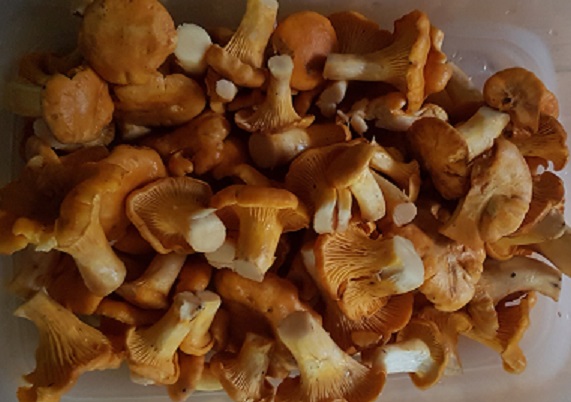
Well, I’m sure I’ve forgotten some of my own rules, and I expect you can come up with more anyway. If you’re foraging commercially, I strongly advise you to join the Association of Foragers (www.foragers-association.org), started by Fife forager, Monica Wilde in 2015. Be mindful of the challenge – let’s all see or taste these gifts from the woods.
(I’m a bit late with this June offering, and what with holidays, weddings, visitors and other commitments, I’m taking a July break. See you in August!)
